In this Article:
In this article, we are going to take a look at two popular, albeit very different, hunting cartridges. When we take on the prospect of the .308 vs .223, it’s important to realize that claiming one cartridge as the better of the two only has credence when applying it to specific hunting or shooting situations.
And that is our objective for this article. We will take a look at the history and dimensions of these cartridges and then dive into the ballistic and other performance characteristics. By doing this, we can better tease apart which hunting or shooting applications these cartridges are suited for.
A Brief History
.308 Winchester
The .308 Winchester was introduced by Winchester in 1952. Though the predecessor, this cartridge is the civilian version of the 7.62×51 NATO round that saw brief use by the general US infantry in Vietnam before being replaced. It was replaced by the M16/5.56 combo and is now only used in machine guns, designated marksman, and sniper rifles.
Where the .308 has gained a strong and loyal following is in the hunting community. This is a larger bullet with excellent range and stopping power. It’s a great medium to large game rifle and can be used for just about any large game animal in the world, barring a few.
Not only is the .308 a fantastic civilian hunting round, but it also displays enough speed, power, and distance to be adapted into police force sharpshooting units and it is still utilized in some military circles. That is a high recommendation for the use of this cartridge.
The .308 is extremely popular, and you can tell based on the sheer amount of ammunition and type of ammunition that is available. There are several bullet weights, powder charges, and bullet design can all impact the bullets flight and power characteristics.
.223 Remington
The .223 Remington (Pronounced two-twenty-three) was introduced to the public in 1963. This .224†diameter bullet was designed as a high velocity, flat shooting cartridge that would be capable of taking varmints up to deer sized game. There is a multitude of ammunition options available for the .223 Remington including various bullet designs and weights. The most common bullet weights available are going to fall within the 40-55gr range, but there are lighter and heavier options available.
As many of you are probably aware, the .223 is the civilian version of the 5.56×45 NATO round. Both of these cartridges are very similar in their performance and specifications. The 5.56 NATO is slightly hotter than the .223. While most firearms chambered for the 5.56 NATO can also shoot .223 rounds, not all firearms chambered for the .223 can shoot 5.56 rounds. Be aware of your rifles specifications before loading with 5.56.
The high velocity, flat trajectory, and light recoil of the .223 also make it a popular round for competitive shooters as well as AR owners.
Specs
| .223 Rem | .308 Win | |
|---|---|---|
| Parent Casing | .222 Remington | .300 Savage |
| Bullet Diameter | 0.224†| 0.308†|
| Neck Diameter | 0.253†| 0.3433†|
| Base Diameter | 0.376†| 0.4709†|
| Case Length | 1.76†| 2.015†|
| Overall Length | 2.26†| 2.8†|
| Case Capacity | 31.4gr | 56gr |
| Max Pressure (SAAMI) | 55,000psi | 62,000psi |
Right from the beginning, we see that there are some significant differences when looking at the .308 vs .223. The .308 uses a much larger 30-cal bullet while the .223 uses the smaller 20-cal bullet. Right there we can expect some pretty dramatic differences between these two cartridges and how they will fly. The .308 case and overall cartridge length are a few tenths of an inch longer than the .223 cartridge as well.
Looking at the case specs, we also see that the .308 uses a much larger casing that can hold much more powder and withstand a higher amount of pressure when the powder is ignited and combusts. And it makes sense with a larger and heavier bullet more powder would be needed to provide the force to make this an effective cartridge.
To make some comparisons between these two cartridge types, we have chosen five rounds that give us a better glimpse at the types of rounds available for each cartridge. We will see that even rounds of the same cartridge type can behave quite differently. By doing this, we hope to give a broader picture of the .308 vs .223. Below is the rounds will be looking at for the remainder of the article.
 .308 Hornady BTHP Match 168gr
.308 Hornady BTHP Match 168gr .308 Winchester Super-X 180gr
.308 Winchester Super-X 180gr .308 Nosler Ballistic Tip 165gr
.308 Nosler Ballistic Tip 165gr .308 Federal Vital-Shok Ballistic Tip 150gr
.308 Federal Vital-Shok Ballistic Tip 150gr .308 Federal Gold Medal Sierra Matchking 175gr
.308 Federal Gold Medal Sierra Matchking 175gr
 .223 Federal Vital-Shok Nosler Partition 60gr
.223 Federal Vital-Shok Nosler Partition 60gr .223 Remington Premier AccuTip 50gr
.223 Remington Premier AccuTip 50gr .223 Nosler Trophy Grade Varmint 40gr
.223 Nosler Trophy Grade Varmint 40gr .223 Winchester Super-X 64gr
.223 Winchester Super-X 64gr .223 Hornady BTHP Match 75gr
.223 Hornady BTHP Match 75gr
This selection of rounds might still be a relatively small sample size of what’s available on the market, but we have a nice selection of styles for each cartridge type that range in bullet weights, designs, and uses.
And this is not a list of what we think is the absolute best rounds available. Chances are your favorite round for whatever cartridge you use are not on the list, and that is not because we looked at it and decided it was worthless. We are just limited in space, and these rounds gave us a nice rounded set of for each cartridge.
In the off-chance that you are sitting there with some skepticism about ten rounds giving us a real look at how these cartridges compare to each other, we have compiled many more rounds and listed them at the end of this article. We have compiled and generated the same data that we will discuss and will list those averages at the end of each section. This way, we can check ourselves and be more confident that we are drawing conclusions that will accurately reflect the two cartridges as a whole.
All of the data that you will find in this article was either generated from popular ballistics calculators that are available online or the data was gathered directly from the manufacturer’s website. Because this is computer generated data, the numbers might vary slightly when these rounds are fired through your shooting platform. While the numbers might differ slightly, the differences in the stats between rounds should remain the same.
And finally, we are looking strictly at factory loads. If you’re looking for the top-performing rounds, you are probably going to have to get into hand loading which is beyond the scope of this comparison. Factory loads are not loaded as hot as they can be for safety reasons so you might see some numbers floating around for these cartridges that seem to blow the performance of these rounds out of the water. They are out there, and we are aware of it. Still, there is a lot we can learn from just looking at some of the available factory loads on the market.
Recoil
Recoil is an important aspect of cartridge comparison, and when you are down to several cartridge choices lighter recoil may or may not be a topic you want to consider. While most shooters can deal with the recoil of most hunting or self-defense rifles, it is much easier to handle a rifle when the recoil is manageable. For new users or younger hunters, the recoil becomes even more important. If you are thinking about the recoil when trying to line up a shot, there is a good chance that flinching during the pull is going to throw the shot of course.
What we are measuring in this section is the actual force of recoil generated when firing these cartridges. This is not technically the “felt recoil.” Felt recoil has a lot of other variables involved, and we just can’t put a number on them. Still, knowing the force of recoil (ft.lb) will give you a good idea of the kick that you will feel since more recoil energy is going to mean more kick.
So, let’s first just take a look at the averages for the .308 vs .223 (Graph 1).
This is a pretty clear-cut conclusion that the .308 generates a significantly higher amount of recoil than the .223 at nearly four times as much. When shooting one right after the other, you’re going to notice the difference regardless of your experience. This is a general look at the recoil from the two rounds provided by the ballistics calculator, and we need to look at our rounds to be sure this trend holds up.
Let’s take a look at all eight of our rounds for comparison and see if there is any variability between different rounds and loads (Graph 2).
We took some liberties while generating these numbers and feel the need to be up front with how the numbers were calculated. First, we utilized the muzzle velocities that were provided by the manufacturer for each round. We used the same rifle weight for all the rounds of both cartridges which was 7lbs. For the powder charge, we took the averages from several handloading handbooks and used that same weight for every round of each respective cartridge. We were also conservative with this number as factory loads are rarely ever load maximum charges.
With that being said, it’s important to understand that the numbers here are not going to be dead on what the actual recoil energy will be when firing any of these factory loads. They should be close but every rifle is a little different. What’s most important is that the trends between cartridges will be reflective of their true differences.
While there is some difference in the recoil when looking at different rounds within each cartridge, especially with bullet weight, the trend of the .308 having more recoil is still there, and it is significant with each of the five .30 rounds being between four to five times the amount of recoil energy than the .223 rounds.
It’s not only the difference between the two cartridges that we want to focus on but the actual numbers. All of the .308 Win rounds have a recoil energy (ft.lbs) of over 20ft.lbs. While an experienced shooter is not going to be phased by this amount of recoil, it is enough to influence a shot and especially quick follow-up shots. On the other side, the .223 Rem rounds are only generating recoil at or below the 5ft.lb mark which for experienced shooters is not noticeable at all and even for new shooters is more than tolerable. We will come back to this when we talk about the applications of both cartridges.
In the table below, you will find the average recoil energy generated from our full set of rounds.
Average Recoil (ft.lb)
| .308 Winchester | .223 Remington |
|---|---|
| 22.15 | 4.29 |
Like the results we just saw, there is a very real difference in the recoil generated between these two cartridges and the majority of you didn’t need us to tell you that this would be the case. And though most of you do not need us to pontificate on this difference, it is important for those who may not have a lot of experience in the hunting and shooting community that you shouldn’t choose a cartridge to shoot based solely on the recoil. In the case of these two cartridges, there are big differences in the applications. While light recoil is nice, it usually means lower numbers in several performance categories that would not be beneficial for a lot of scenarios.
Ballistics
In this section, we will take a look at several ballistic categories to compare these two cartridges. While ballistics alone will not tell us which cartridge performs best in specific hunting and shooting situations, they are a huge component. We will look at ballistic coefficients, velocity, and trajectory for the .308 vs .223 comparison and use this data at the conclusion of the article to draw some conclusions.
It’s also important to mention that all of these different categories in the ballistics section, as well as those outside of this section, interweave together rather than just stand alone. For a comparison standpoint, we look at each individually but remember that all of these categories play off of one another.
Velocity
Velocity is an important ballistic factor when hunting or shooting at the range. The faster the bullet is traveling, the less it is impacted by wind and gravity. The less these outside influences have on the bullet, the truer its flight path and perhaps the more accurate. Now, some of these benefits are not directly linked to velocity, but velocity influences a lot of the metrics that do determine a rounds performance in different environmental scenarios.
There is a fine line in velocity, and a stable bullet and the twist rate of your barrel and the type of round you are using is involved in this stability. A hot round doesn’t do any good when you start getting odd rotations or even flipping in the bullet’s flight. Velocity is also important because a bullet needs a specific velocity to have the proper expansion at impact. This is critical for hunting rounds.
There other factors that influence accuracy and we will touch on that later. In this section, we will look at the velocity of all ten rounds as they leave the muzzle and travel downrange to the 500-yard mark (Graph 3). The velocity is measured in feet per second (ft/s).
While the .223 has a much higher muzzle velocity than the .308, you will notice that as the bullets travel downrange, the .223 bleeds velocity significantly faster than the .308 and a lot of this has to do with how light the bullets are and the amount of powder that can be used in the .223 casing. Now, we will get to other specs of these cartridges shortly, and those numbers will show that this trend in losing velocity may not be relevant anyway as it’s effective range does not reach out to the yardage where significant velocity is lost, especially in the energy department for the .223.
Even though the .223 rounds tend to bleed velocity at a higher rate than the .308 Win rounds, even at 500 yards, they are still supersonic as are the .308 Win rounds.
If we look at the averages of both cartridges, though we think looking at individual rounds is more important when you are actually looking at something to chamber, we see the .223 rounds with a higher average velocity than the .308 Win rounds by quite a large margin out to the 300-yard mark. From there to the 400 and 500-yard mark the .308 rounds close the gap and surpass the average velocity of the .223 rounds.
Let’s take a look at the numbers from our larger data set and see if the .223 Rem rounds still carry a higher velocity than the .308 Win at the initial yardage markers.
Average Velocity (ft/s)
| Yards | .308 Win | .223 Rem |
|---|---|---|
| Muzzle | 2733 | 3189 |
| 100 | 2521.5 | 2795 |
| 200 | 2320 | 2426 |
| 300 | 2182 | 2088.5 |
| 400 | 1946.5 | 1781.5 |
| 500 | 1775 | 1515.2 |
With more rounds of each cartridge factored into our assessment, we see very close averages to the smaller sample size, and we also see that the trend of the .223 Rem rounds losing velocity at a higher rate than the .308 Win rounds is still present as well. Like the smaller sample size, we see the two cartridges flip positions at the 300 yard marker even though the .223 Rem rounds had a little over 400 more fps leaving the muzzle. We will see how the other numbers play out, but usually, if you see a cartridge falling at a higher rate in one category, you will see the same trend in others. This is definitely something to keep in mind, especially if you have a certain range in mind that a lot of your shots are going to be taken.
We also wanted to take a look at the average supersonic flight limit of these two cartridges. Basically, we wanted to know at what yardage these two cartridges fall below supersonic flight, on average. We will go ahead and mention that there is a lot of deviation for both of these cartridges from their average, but the gap is still so large there is no overlap between the individual rounds of each cartridge.
This is a metric that we wanted to look at because a lot of long range marksman are going to be interested in how long a round will maintain supersonic speeds. This is due to the difference in bullet stability between a round in supersonic flight versus subsonic flight. In the former, the bullet is more stable and its performance and flight is a little more predictable than a round that falls below supersonic speeds. And this is with the caveat that the round at supersonic flight was stable to begin with.
So if a round is more stable while in supersonic flight, the longer it maintains that speed, the easier it should be to calculate and predict where the round will hit. And we can’t help but think that is only true for a very small subset of those reading as most, including ourselves, are not going to very accurate anyway with a factory load at 1,000 yards. Still, in theory, this should be a beneficial category for some.
Average Supersonic Limit (Yards)
| .308 Winchester | .223 Remington |
|---|---|
| 1023.7 | 710 |
When we first saw this data, the first thing that came to our minds is that neither of these cartridges, limited to factory loads, are probably going to be first choice for long range shooting. While the .308 Win does have an average a little over 1,000 yards, the .223 Rem falls nearly 300 yards below the 1,000 yard marker. In fact, none of the .223 Rem rounds that we looked at in this article break the 900 yard mark. With the .308 Win, we did see a few rounds that exceeded the 1,100 yard mark and one that broke 1,200 yards. We also saw several that fell below the 800 yard mark and were more similar to the .223 Win rounds.
While it all depends on what long range shooting actually means to you, neither of these cartridges have the performance of other available factory loads that are on the market and there is certainly a difference in the supersonic limits of these two cartridges. Like all of the other performance categories, it will be interesting to bring this information into discussion with other specs that are applicable to long range shooting.
Ballistic Coefficient (BC)
The ballistic coefficient is a number generated from several variables that deal with bullet dimensions. What this number will tell you is how well a bullet is streamlined. The higher the ballistic coefficient, the better the bullet is at cutting through the wind due to minimal air drag and the bullets are less prone to wind drift. This also means that a bullet will hold its velocity better. Theoretically, a bullet with a higher ballistic coefficient is going to require fewer shot adjustments when taking shots at long range where wind becomes a large factor.
We have taken the BCs for our eight round selections and put them side by side for comparison (Graph 4).
We see that the .308 rounds that we have selected have a much higher BCs than the .223 rounds. If you remember from the velocity section, the .223 rounds seemed to bleed off velocity much more dramatically than the .308 rounds and the small BCs complement that observation. All but one of the .308 Win rounds shows a ballistic coefficient of over 0.4 and the one that falls below is a soft point which usually has a decreased BC.
In some cases, we see nearly twice as high a BC for the .308 Win over the .223 Rem rounds. Not all of the .223 rounds are in the .2 area. We do see a .395BC with the 75gr Match ammo. So while we see a general trend for the .308 showing higher BCs, there are rounds out there for the .223 that is going to give you better long range potential.
The .223 rounds also have much lighter bullets than the .308 which makes them more susceptible to wind drift. Now, this doesn’t necessarily mean that the .223 will have a poor trajectory, especially in the ranges it functions best at. So, we will take a look at the short and long-range trajectories of these cartridges and individual rounds.
Average Ballistic Coefficient
| .308 Winchester | .223 Remington |
|---|---|
| 0.434 | 0.252 |
Here again, we see that the trends remain the same when we look at more rounds for each cartridge. The .308 Win is going to have a lot more options if you are looking for higher ballistic coefficients than the .223 Rem. And as with the smaller sample size, there are options for the .223 Rem with BCs in the 0.3 range though they are limited. We keep beating this bush, but you have to take these numbers into consideration while keeping in mind the application of these cartridges. For most uses someone is going to prefer the .223 Rem, a high BC is probably not going to be a high priority because it’s not going to impact the performance in the context of the application.
Trajectory
Understanding the trajectory of the cartridge you want to use is going to make lining up shots and staying accurate through various ranges much simpler. Bullets do not travel in a straight line but have a more arching flight path which means you have to adjust the elevation of your shot placement correctly. Wind might also be a factor at increased distances, but these two cartridges usually are not used at ranges where the wind is going to alter a shot unless you are in gale force winds. Even at distances up to 500 yards though, there is going to be some bullet drop.
Before we take a look at the short and long-range trajectory, we wanted to give a broader picture of these two cartridges’ trajectory that allows you to compare their flatness much easier. The flatter the trajectory, the easier it is to make shot placement adjustments (Graph 5).
We used the same rounds from the same manufacturer, and same bullet design and both of these rounds are not used in our comparison for other topics. Finding two rounds from these cartridges near the same bullet weight is not possible as the casings and firearms chambered for a .223 round would not be compatible with a 4†long bullet but with other metrics matching up, we think this is a fair comparison for comparing the .308 vs .223 trajectories.
Out to 150 yards, there is not any difference between the two rounds that is noticeable. It is not until the 250-yard mark that we start to see some space between the two trajectory lines. Even as the bullets move out to 500 yards, there is only around five inches of difference in bullet drop between the much heavier .308 round than the lighter .223 bullet. Even so, both bullets drop over 50 inches from the muzzle making long-range shots difficult with these two cartridges.
Of course, this similarity in trajectory might not be prevalent across the board when you start enlarging the sample size. To go into a little more depth, let’s take a look at the short and long-range trajectories of our eight comparison rounds.
Short Range Trajectory
In the hunting world, a look at trajectories from 300 yards and in is warranted as a vast majority of shots are taken within this range. Of course, there are instances where longer shots occur, and we will look at the trajectories of these rounds at increased ranges as well to see how feasible 300+ yard shots are for the .308 vs .223.
For short range trajectory, the firearm was zeroed in at 100 yards for each round. We are measuring bullet drop in inches from muzzle out to 300 yards with the data taken from the manufacturer’s website (Graph 6).
All rounds would need very minimal adjustments within the 100-yard mark, and there is no difference between the two cartridges that are worth noting. We see that both cartridges all hold around the same position at both the 200 and 300-yard mark and show only a few inches of difference for all of the rounds for each cartridge. We do see a slightly flatter trajectory from a couple of the .223 rounds. The light 40gr .223 round does show a much flatter trajectory than the other rounds, but overall, both show the same loss in trajectory at these ranges, and we are only talking about less than 2 inches of difference at the 200-yard mark.
At the 300 yard mark, we do see a more discernible difference between the two cartridges, especially with the 175 and 180gr .308 rounds. There are still quite a few rounds that are clustering around the thirteen-inch drop mark, but there are outliers of much flatter .223 rounds around the nine and eleven-inch mark while some .308 rounds drop to the fifteen and seventeen-inch mark. It’s still not a huge difference between cartridges. We have a lot of comparison articles where there is a much more dramatic difference.
We can conclude that the short range trajectory for both of these rounds is very similar to all the rounds dropping between 9 and 17 inches at 300 yards out. We also see that for both cartridges, there are rounds that can give you flatter trajectory or a more pronounced drop in trajectory.
Let’s look at the averages from our larger data set and see how the two cartridges compare.
Average Bullet Drop (Inches) at Short Range
| Yards | .308 Win | .223 Rem |
|---|---|---|
| 50 | -0.125 | -0.26 |
| 100 | 0 | 0 |
| 200 | -4 | -3 |
| 300 | -14.5 | -12 |
| 400 | -32.8 | -29 |
We still minimal difference between the two cartridges out to the 200 yard mark where the .223 Rem has a an inch less bullet drop than the .308 Win. At the 300 yard marker, the gap widens to around 2.5 inches in favor of the .223 and the same trend continues at the 400 yard mark where the .223 Rem has an average of 3.8 inches less bullet drop than the .308 Win.
The difference between these two cartridges when looking at short range trajectory is minimal. If we were to graph all of these rounds as we did with the smaller sample size, you would see that there is a lot of overlap between the two cartridges as well. It definitely gives us the feeling that you will need to look to other performance categories in your decision as you can get excellent flat shooting rounds with either of these cartridges within 400 yards.
Long Range Trajectory
Neither of these cartridges is known for their outstanding performance at long range like several other cartridges, but they are both used in hunting situations, especially the .308 Win, where there might be times where you need to take a 300+ yard shot and we still want to look into any major differences between the two. And we also can’t rule out that there might be some of you who are looking at one of these cartridges for long range shooting at the range. For this section, the firearms were zeroed in at 200 yards and measurements taken out to 500 yards. Bullet drop is measured in inches (Graph 7).
Like the short range trajectory, both of these cartridges cluster fairly tightly at the 300-yard mark. Also, like the short range, there are rounds available for each cartridge that will give you a flatter trajectory. What we want to point out is that both cartridges show a pretty significant drop when hitting ranges of 400+ yards. At 400 yards, all of the rounds are within ten inches of each other with the .223 showing a slightly flatter trajectory than the .308 rounds. At the 500 yard mark, it gets a little messy with the various rounds from each cartridge intermingled with no real trends between cartridges.
We do have the 40gr .223 round sitting at around 38 inches of drop while the remainder of the rounds is falling in the 45-55 inch range. While the flattest round is a .223 round and the steepest drop round is a .308 bullet, the majority of the rounds cluster together with no statistical difference between the two.
Even if these cartridges have rounds that have the velocity and stopping power, which we will shortly get to, having to adjust for 50†of bullet drop make hitting the target difficult for even the most skilled of marksmen. It’s not impossible, but a lot of hunters are not going to be willing to take a shot with that much adjustment on an animal, and that’s not even taking into account terrain and other environmental factors.
Before we move on to stopping power, let’s take a quick look at the average bullet drop of these two cartridges when factoring in more rounds. For these averages, we have also included a 700 and 1,000 yard marker for those of you that have more confidence in your shooting than I do.
Average Bullet Drop (Inches) at Long Range
| Yards | .308 Win | .223 Rem |
|---|---|---|
| 100 | 2 | 1.53 |
| 200 | 0 | 0 |
| 300 | -8.5 | -7.5 |
| 400 | -24.7 | -23.24 |
| 500 | -50.3 | -50.4 |
| 700 | -137.6 | -155.2 |
| 1000 | -401.6 | -543.5 |
We see a lot of the same trends as we did in the previous graph with the smaller sample size. There is little difference between the two cartridges out to the 500 yard mark and we should also not that when looking at individual rounds, there is a lot of overlap between rounds of each cartridge at each marker to this point.
It is out past the 500 yard mark where we begin to see the two cartridges separate themselves. At 700 yards, the .308 Win has a little over 20 inches less bullet drop than the .223 Rem though there is still some overlap between individual rounds. At the 1,000 yard marker, we see around 142 less inches of bullet drop, on average, for the .308 Win which is pretty significant. The range at this marker is pretty wide with rounds for the .308 Win ranging anywhere from 328 to 545 inches and the .223 Rem rounds ranging anywhere from 347 to 828 inches of bullet drop.
While it depends on how you define long range shooting, neither of these cartridges give you the best performance that is available. Out at 500 yards, which is a pretty significant distance for a lot of us, there is not a huge difference between the two cartridges in the context of bullet drop. While this might be the case, a lot of marksmen, especially hunters, are going to be concerned with the bullets stopping power.
Stopping Power
For self-defense and hunting situations, stopping power might be the most used term when discussing a comparison of cartridges such as the .308 vs .223.
There are a lot of factors for determining how well a bullet can take down a target quickly. The kinetic energy that is transferred to the target and which can disrupt and destroy vital organs and nervous system is what we will focus in on in this section along with penetration which we will look at with two different metrics. Fragmentation and wound type are also important but are more of a discussion for specific rounds than trying to compare two cartridges. And of course, perhaps the most important component of stopping power is going to be shot placement which is completely on your shoulders.
Energy
When we talk about stopping power, the kinetic energy that is associated with a bullet is a critical component. This kinetic energy turns into a physical force when the bullet hits the target. This energy is transferred from the bullet to the target and causes tissue/organ damage. If you search around you will find that the 1,000ft.lb of energy is the safe marker for harvesting a whitetail and other game around that size. Obviously, other factors are involved such as the bullet’s behavior on impact and shot placement. Still, you can see the importance of bullet energy.
So, let’s take a look at our rounds for comparison and examine any differences we might see in associated bullet energy (ft.lb) (Graph 8).
When we look at the kinetic energy of these two cartridges, there is no denying that the .308 greatly outperforms the .223. All of the selected .223 rounds fall below 1,000ft.lb of force by the 100-yard mark and continue to fall to around the 400-500ft.lb mark at 500 yards.
The .308 rounds, on the other hand, have rounds that stay above the 1,000 and even 1,500ft.lb mark at the 400-yard mark. Though, when factoring in long-range trajectory, you might have some issues, but that is for when we discuss the applications of these cartridges. Regardless, this is one of the more clear-cut differences we have seen between the .308 vs .223 besides the recoil.
While we are pretty confident in this trend, let’s take a look at the average kinetic energy of these two cartridges when we bring some more rounds into the equation.
Average Bullet Kinetic Energy (ft.lbs)
| Yards | .308 Win | .223 Rem |
|---|---|---|
| 0 | 2723 | 1290.5 |
| 100 | 2319.9 | 987.8 |
| 200 | 1966.5 | 747.4 |
| 300 | 1657.9 | 556.9 |
| 400 | 1389.7 | 408 |
| 500 | 1109.5 | 298.1 |
Like the smaller data set, there is a wide margin in the kinetic energy of these rounds given the heavier bullets of the .308 Win as well as similar velocities. With an average of over 1,000ft.lbs at 500 yards, the .308 is capable for most North American game within common hunting shot distances. On the other hand, the .223 Rem average falls below 1,000ft.lbs at the 100 yard marker. That could be an issue for you or it might not. It certainly rules out some hunting applications but we will get to that later.
Penetration (Sectional Density)
How well a bullet penetrates is also an important component of stopping power. There will be hunting situations where deep penetration is needed, especially for larger game, while there are also times where penetration is not going to be as important.
Our best method for discussion penetration quantitatively is by looking at the sectional density which is calculated by using the bullets weight and diameter. Heavier bullets with smaller diameters give you a higher sectional density, and higher sectional densities mean more penetration. Think of it like this; heavier bullets with smaller diameters mean a greater amount of pressure is being exerted on a smaller area which pushes the bullet further. So if you have two bullets with the same weight but one has a smaller diameter, the latter should have a higher sectional density and more penetration. Velocity also plays a big role in penetration as does the bullet design but for the sake of a clean cartridge comparison, we are omitting those factors.
We are taking a lot of relevant and important factors out of the discussion here and it’s a price we have to pay to really compare cartridges without the needed field data. There is also not really a guideline we can give you that is going to tell you what sectional density is the right number for certain game. The sectional density along with the momentum, which we will get to shortly, and the anatomy of the desired game you are wanting to put on your table all need to be taken into consideration. Oh, and you need to experiment in the field as well, but that’s the fun part.
So while we are not doing much for you in providing information for which rounds are best for certain game, this data along with the momentum data should still provide some insight into how these two cartridges differ.
We have calculated the sectional density for our eight rounds and will take a look at those now (Graph 9).
It’s very obvious that the .308 is going to offer you much more penetration than the .223 with all of the .308 Win rounds having sectional densities at or greater than .25 while only one .223 Rem round barely breaks the .2 mark. Even though the .223 uses much skinnier bullets, they rarely go above the 65gr weight which means poor penetration. You can see how bullet weight influences the amount of penetration you will get as well when looking at the 75gr .223 round that has the highest sectional density of the .233 rounds. This is going to be a major factor when we discuss which applications each cartridge is best suited for.
Before we jump into the bullet momentum data, let’s see if the there is still a margin of difference between these two cartridges when we add more rounds into the equation.
Average Sectional Density
| .308 Winchester | .223 Remington |
|---|---|
| 0.248 | 0.164 |
There is still a significant jump in the sectional density for the .308 Win rounds when compared to the .223 Remington rounds. Yes, it is less than a tenth of a difference, but that’s a pretty big jump for sectional density numbers. When it comes down to looking at individual rounds, you will find there are many more .308 Win rounds that provide SD numbers in the +0.25 range while there we have only one .223 Rem round that breaks the 0.2 marker. It’s definitely a difference between these two cartridges that we should keep in mind as we move forward.
Penetration (Momentum)
The second metric that we are going to look at for an idea of the potential penetration of these two cartridges is bullet momentum.
Momentum is the ability of an object in motion to remain in motion. From a penetration/hunting/stopping power perspective, how well will the bullet overcome tough hide and bone to reach vital organs?
And this is not just a hunting unit. Many tactical users are also concerned with bullet momentum. Some might want a round that will be able to pass through obstructions. Some homeowners might not want as much penetration to help reduce the risk of rounds passing through walls. We bring it up to point out that depending on the situations, more or less momentum might be more beneficial.
We have calculated the bullet momentum numbers for each of the ten selected rounds and have graphed them below, from the muzzle out to 500 yards (Graph 10).
We see the same gap in performance for the bullet momentum that we have seen for other “stopping power†categories with the .308 Win rounds carrying a significantly greater amount of momentum than the .223 Remington rounds. From the muzzle, the .308 Win rounds have an average bullet momentum of 65lb/ft.s while the .223 Rem rounds have an average of 25lb/ft.s. We also see that the rounds from their respective cartridge type tend to group tightly together.
While the .223 Rem rounds tend to bleed momentum at a lower rate, it is not by much with the .308 Win still carrying an average of 32lbs/ft.s more momentum at the 500 yard marker.
We shouldn’t expect to see anything different but let’s add in the larger set of rounds and see how the bullet momentum averages compare.
Average Bullet Momentum (lb/ft.s)
| Yards | .308 Win | .223 Rem |
|---|---|---|
| Muzzle | 64.1 | 26 |
| 100 | 59.1 | 22.7 |
| 200 | 54.4 | 19.8 |
| 300 | 49.9 | 17 |
| 400 | 45.7 | 14.6 |
| 500 | 41.7 | 12.5 |
We still see the increased bullet momentum for the .308 Win rounds though the average for the .223 Remington rounds to come up a few units when compared to the smaller data set. Even so, the difference is still by quite a margin and will certainly factor in to our later discussions on the applications of these cartridges.
With the performance categories out of the way, let’s take a look at a few other “miscellaneous†categories before wrapping up this article.
Accuracy
Comparing the accuracy of two cartridges has its limitations. While we could gather shot group data for each round, in the end, the accuracy can still vary from day to day from environmental factors and because of who is pulling the trigger and what firearm they are using.
Still, accuracy is an important component, especially for those trying to decide between a cartridge choice, and we can use our recent discussions to draw some conclusions on accuracy.
Both the short and long-range trajectories were very similar between these two cartridges. On average, the .223 might have slightly flatter trajectories for some rounds, but overall, you’re going to have to make the same type of adjustments for both rounds. We did see the .223 Rem rounds show quite a bit more bullet drop once the rounds move out past the 500 yard mark. Accuracy is going to take some practice with either of these rounds past this distance, but some might want the 20 inches less bullet drop at 700 yards that the .308 Win touted.
The ballistic coefficients for the .308 rounds used in our comparisons give an advantage to the .308 cartridge over the .223. When shooting in windy conditions, the heavier .308 bullets are going to be able to resist these environmental factors better than the .223 rounds.
Recoil is also going to play a role in accuracy, especially for less experienced shooters and for making quick follow up shot. The .308 has a much more significant amount of recoil than the .223 and is going to be difficult to make accurate follow up shots, especially when going side by side with the .223.
Again, for experienced shooters who have dealt with recoil similar to the .308, it might not impact them as much. And while there is increased recoil, there are going to be hunting situations where you will have to deal with the recoil to get more power.
Even after this brief recap, we don’t feel comfortable saying one cartridge is superior to the other when it comes to accuracy. Both have limitations, but both can be tack drivers when in the hands of a confident and practiced shooter.
Price & Availability
As far as price goes, these two cartridges are both affordable, especially when compared to other popular hunting cartridges The .223 round might be a few dollars cheaper on average, but your choice for cartridge should be based on other factors other than such a small difference in price. We have listed the prices of the eight rounds we have used through this article and listed them in the table below.
| Ammunition | Price (20 Rounds) |
|---|---|
| .308 Winchester Super-X 180gr | $21.99 |
| .308 Hornady BTHP Match 168gr | $26.99 |
| .308 Nosler Ballistic Tip 165gr | $30.99 |
| .308 Federal Vital-Shok Ballistic Tip 150gr | $31.99 |
| .308 Federal Gold Medal Sierra Matchking 175gr | $25.99 |
| .223 Federal Vital-Shok Nosler Partition 60gr | $24.79 |
| .223 Remington Premier AccuTip 50gr | $21.23 |
| .223 Nosler Trophy Grade Varmint 40gr | $25.99 |
| .223 Winchester Super-X 64gr | $20.99 |
| .223 Hornady BTHP Match 75gr | $18.49 |
Both the .308 and .223 are popular hunting rounds and are readily available at any retailer that sells ammunition. The .223 is readily available because of the popularity of 5.56 platforms. Both cartridges also come in a variety of designs that allow you to match your ammunition to be the most effective in the field going after whatever game is in season at the time.
Special Offer: Join our private community and get exclusive gun deals, handpicked gear recommendations and updates on law changes, every day!
Join our private community
Applications
Now that we have covered all of the performance specs for these two cartridges, it’s time to bring it all together and discuss the applications that one or both of these cartridges might be better suited for. Or equally suck at. We have also included all of the average tables throughout the article for reference.
If you’re hunting for medium to large size game, the .308 is the obvious choice when talking about the .308 vs .223. The difference in stopping power is undeniable, with the .223 only carrying roughly 1,000ft.lb of force at the 100-yard mark. Several of the .308 rounds carry over 1,500ft.lbs of force at 500 yards. The higher sectional densities of the .308 rounds also provide much better penetration and momentum which will be needed for larger game.
For small game where you need tight groupings, the .223 has an advantage over the .308. Lighter bullets paired with the correct rifle twist on your firearm is going to provide incredible accuracy needed to pop small targets at 100 yards or more.
And we don’t want to give off the impression that the .223 is only a varmint cartridge. We have personally seen several nice whitetail and hogs taken with this cartridge and we are sure many of you have to. There are benefits to a .223 chambered rifle in the field. Out past 150 yards, it does get dicey but within that range and with the right round selection and shot placement, the .223 Rem can take a lot of medium sized game. Still, in most situations, the larger caliber .308 Win along with its associated performance specs is probably the safer choice and it gives you more opportunities with larger game.
When thinking about the .308 vs .223 and when to use each, we still think it should be matched with the hunting or shooting situation, but the .308 is a cartridge that young or new hunters with little shooting experience should not be started out on. The .223 is a great hunting cartridge for smaller game that can get the young or inexperienced some confidence handling hunting rifles safely.
When thinking about trajectory of these cartridges, they have very similar performances, especially when used for shots taken at under 300 yards. Even out to 500 yards, we see the average bullet drop for both cartridges are almost identical. From a hunting perspective, both of these cartridges near identical trajectories within hunting shooting limits. Of course, there are individual rounds for each that perform above and below the listed averages. And we just discussed other categories that are going to be important for hunting. We also saw that the .308 Win rounds had a lot more options with better ballistic coefficients than the .223 Rem. While neither had chart topping numbers, the higher BCs for the .308 Win will be beneficial in the field when dealing with high wind gusts at 250 or more yards where there will be some wind drift.
If you are heading out to the range to show off your marksmanship skills, the .223 might be a better option than the .308 if you’re just messing around. Not only is ammunition cheaper, but the light recoil is going to be much easier on your shoulder after a day on the range. The ballistic properties that we covered in the hunting section also apply here and are probably more concerning if you are a little more serious in long range applications. We also saw that the .308 Win rounds stayed above the sound barrier for around 300 more yards, on average, than the .223 Remington rounds. And yes, the .308 does produce a good deal more recoil, but you will also have equipment on the range to help mitigate the fatigue.
As far as tactical purposes, especially when using a semi-automatic platform at close range, the .223 really shines. Low recoil is a huge plus, and all of the ballistics categories within 200 yards is more than applicable for tactical use. The recoil of the .308 Win really makes it unsuitable for this purpose.
Best Rounds
Before we wrap up this .308 vs .223 cartridge comparison, we like to take the ten rounds we have examined and pick some of our favorite rounds for each cartridge for certain shooting scenarios. In this case, it is hunting and range rounds.
Top Hunting Round
For the .308 Win, we are fond of the Nosler Ballistic Tip 165gr. The one drawback is the price tag as it is a little more expensive than other .308 hunting rounds. Even so, it has tremendous velocities remaining well above supersonic speeds over a 500-yard range. The BC of .402 and a decent trajectory when compared to other .308 rounds make it excellent for most shots taken in hunting scenarios. More importantly, the ballistic tip with the penetration and incredible stopping power make it an excellent round for both medium and large game.
For the .223 Rem round, the Winchester Super-X 64gr stands out to us. It has decent kinetic energy for a .223 round and even has enough to take deer up to 100 yards. For small game and varmints, it would have no problem. It also has a pretty high sectional density for a .223 round which helps it out even more for use with medium size game. The trajectory is more than flat enough for shots up to 300-yard shots though the force associated with the bullet at that range is going to limit it to smaller game.
Top Range Round
The Federal Gold Medal Sierra Matchking 175gr round is one of the most used range rounds when it comes to factory loads for the .308 Win. It has supersonic velocities out to 500 yards and beyond with an excellent ballistic coefficient of 0.462. It’s not the cheapest round out there, but it won’t break the bank to go through a box or two on the range. Like any .308 round at 500+ yards, there is going to be some adjustments needed because of the bullet drop, but that’s part of the fun.
For the .223 Rem rounds we have examined, the Hornady BTHP Match 75gr is a great option to take out to the range. It’s an affordable round so you won’t feel guilty about sending a lot downrange. With supersonic velocity that bleeds speed at a low rate and a BC of 0.395, this is a great round to test your skills at long range targets.
Conclusion
When looking at the .308 vs .223, it’s a perfect example of how two cartridges can perform very differently, but still be invaluable when in the right situations. How anyone could label one as better than the other has never made any sense in our minds. For certain game or certain shooting competitions, sure, we understand that one might be better than the other and we hope that is what we have made clear in this cartridge comparison.

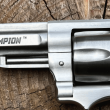
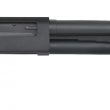
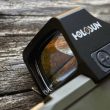

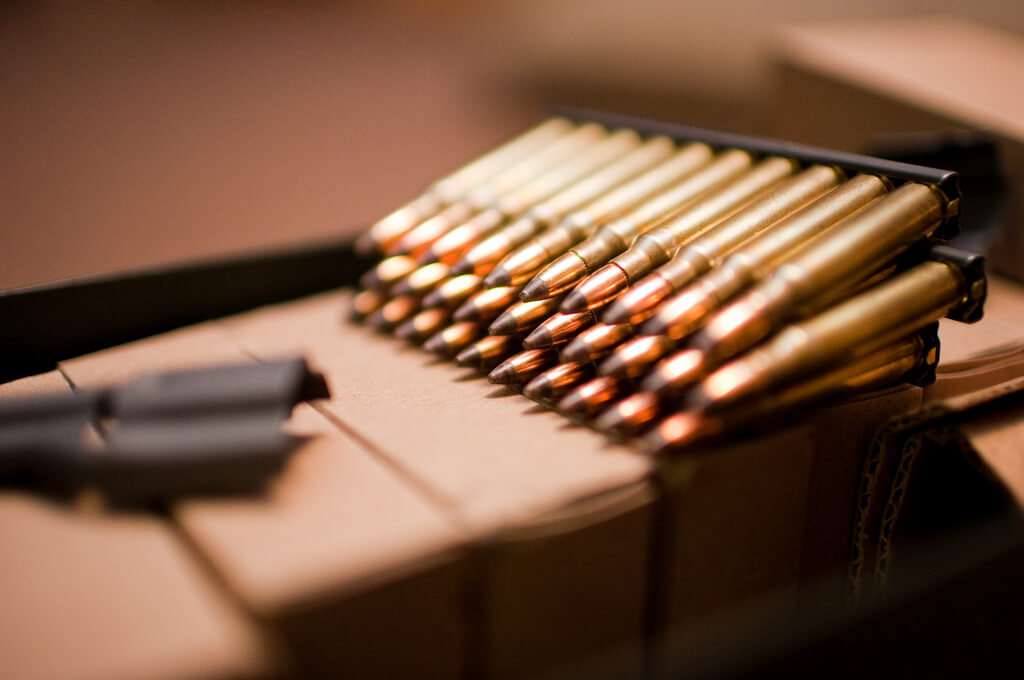
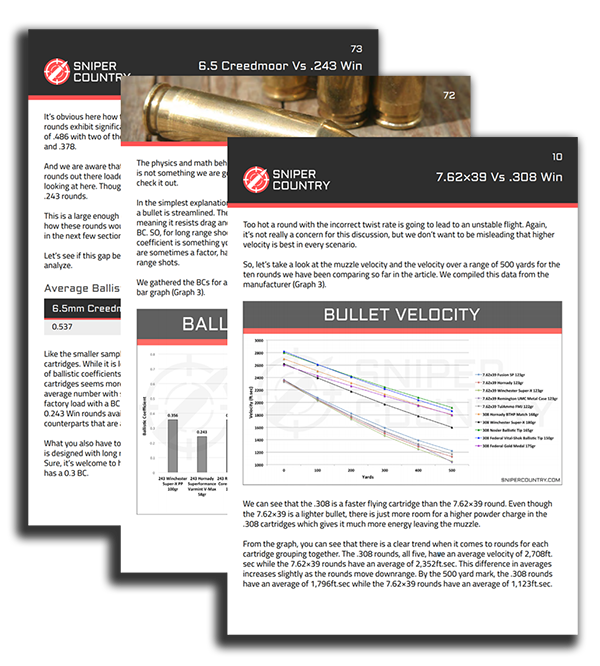




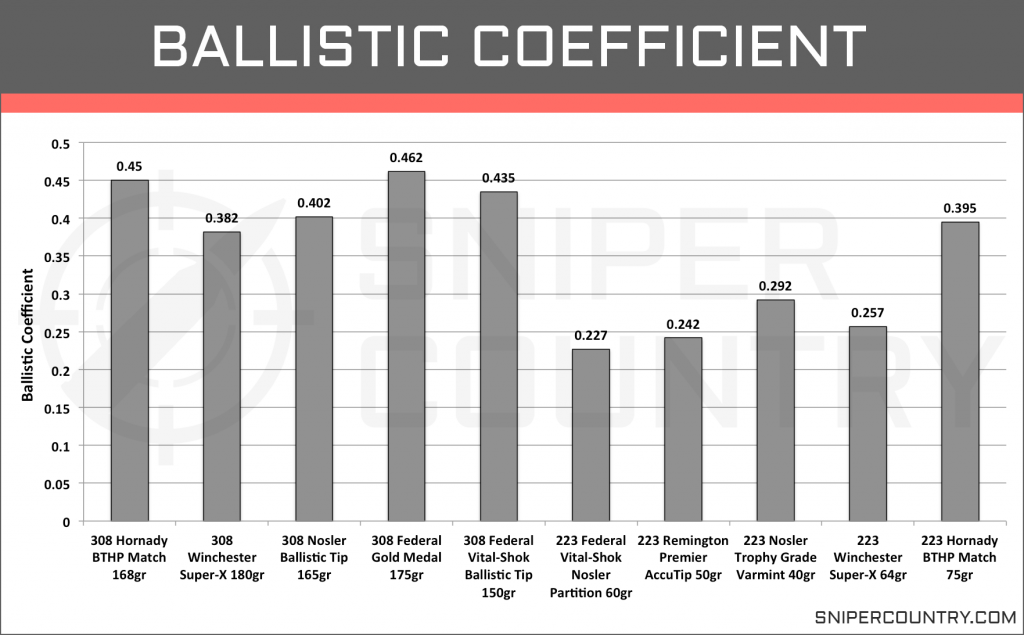
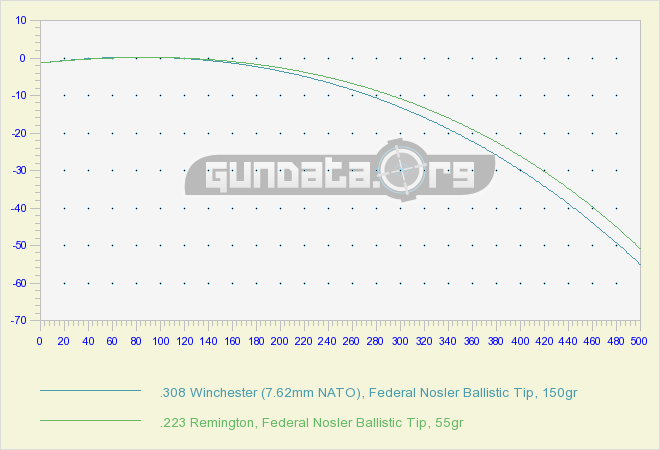


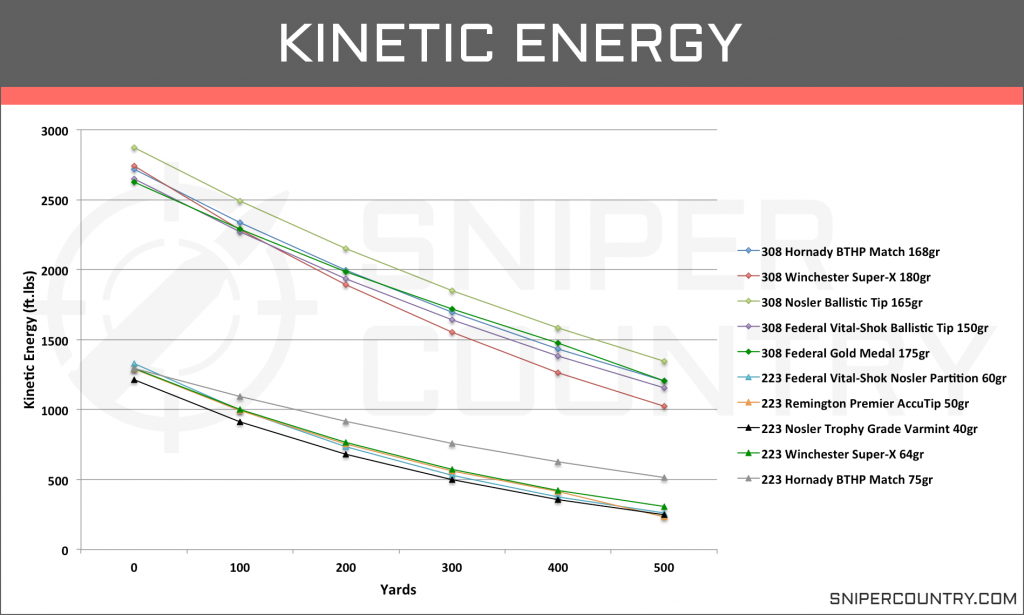
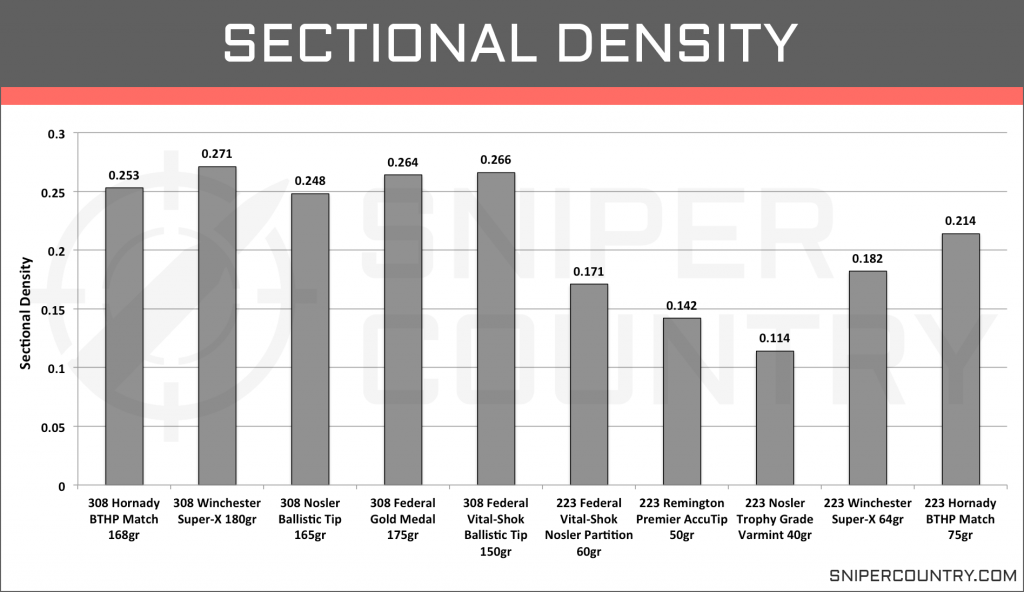


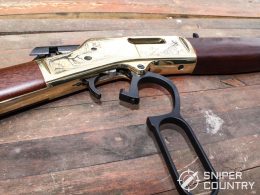


This article states the the 7.62×51 was only used for a short time during the Vietnam war, and now only by a small circle of military units….however, all medium machine guns like the M60, M240B, M240C, M240L are all 7.62×51. And every tank, Bradley, and most helicopters are equipped with a 240 machine gun. And most sniper systems are in 7.62×51!
You are correct and the wording in this article wasn’t 100% clear. It should have said that it saw “brief use as a round issued to general infantry”. We fixed that now. Thanks for the feedback.
Fantastic article! I enjoy both calibers and they each have a place in both target shooting and hunting!
I’d like to point out that “brief use as a round issued to general infantry” should be AMERICAN infantry. Here in Canada the 308 round was carried by regular and reserve infantry soldiers with the FNC1 and C2 right up until around 1990 with the C7 (5.56 NATO) only being introduced around 1985. At the time of our switching to the C7 and C9 (belt fed 5.56) the C6, a belt fed 7.62 NATO machine gun was introduced as a platoon level crew served weapon.
Not to split hairs but I think we can all agree that 7.62×51 is still a very common military round carried by infantry soldiers every day. 🙂
Thanks for the info Rob, we added that to the article as well.
Great job!!! Great article, only the wind deflection data was missing…
Huston, what a great and comprehensive article; very informative with a totally objective and professional tone. I’d like to add that from a military perspective, the .30-06 family,( .308, 7.62 Nato) beginning before WWI and into Vietnam was the principal cartridge of the american rifleman. As battlefield doctrine changed, the 5.56 was adapted. I’ve heard that in Afghanistan and Iraq, in some open terrain, with greater distances, some riflemen, not snipers, are using 7.62 paltforms.